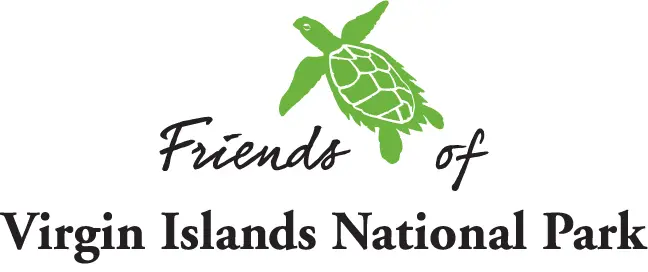STJ Sea Turtle Program Seeks Volunteers to Monitor Beaches
By Amy H. Roberts / Virgin Islands The Source / June 22, 2022
Thursday, June 16, was World Turtle Day, and right on cue, the first known female hawksbill turtle of the season laid a nest on one of St. John’s more remote beaches.
The nest was discovered by two early morning walkers who combine their love of exercise in the morning – when it’s still relatively cool – with the joy of discovering and protecting the offspring of a beloved endangered species.
The walkers are volunteers with the Virgin Islands National Park’s Sea Turtle Program sponsored by the Friends of the Virgin Islands National Park. The program’s coordinators are now seeking additional volunteers to monitor the island’s 47 beaches.
Volunteers for the 2022/23 season need to be residents of St. John and able to commit July-November for at least one early morning patrol per week on a set schedule. New volunteers need to attend one training session to learn how to recognize signs that a female has crawled ashore during the night to lay her eggs and then what to do if nesting activity is suspected.
Sea Turtle Program coordinators Adren Anderson and Willow Melamet will be holding two training sessions this week: one on Wednesday, June 22, from 4:30 to 6:30 p.m., and one on Friday, June 24, from 9 to 11 a.m. The sessions will be held at Pavilion #1 at Hawksnest Beach.
Those who plan to attend, as well as those who would like to attend but cannot come to either session, are asked to email the coordinators at vinpturtles@friendsvinp.org.
Last year, dozens of volunteers regularly patrolled the beaches around St. John, finding 109 hawksbill potential nesting activities and 35 confirmed nests.
The patrols are a fun family activity – kids can learn to identify the tracks of the three species of sea turtles that nest on St. John and distinguish them from the tracks of crabs, mongooses, iguanas, donkeys, and deer. Volunteers can sign up for patrols in familiar areas, such as the popular North Shore Beaches, as well as remote spots, including Lameshur, Europa, and Brown bays.
All species of sea turtles in the Virgin Islands are endangered; experts now estimate that only one turtle out of 5,000 will live long enough to reproduce; that’s why it’s important to protect turtle nests from predators, including dogs, mongooses, and poachers who believe the eggs have special health benefits.
When volunteers find a nest, Anderson and Melamet quickly head to the scene to screen it off from predators. Nests typically contain between 100 and 200 ping-pong ball-sized eggs.
By recording the date of the nesting activity, the program directors can predict when the nest is likely to hatch and keep a close eye on the activity. Volunteers sometimes pull all-night vigils, hoping to see hatchlings emerge from their nests and make their way toward the sea.
Witnesses to hatchings say it’s hard not to be moved by the baby turtles as they poke their way out of their shells, shake their flippers, and begin to waddle across the sand. Once the turtles reach the sea, they will spend the rest of their lives there, except for brief periods when mature females return to their natal beaches to nest.
